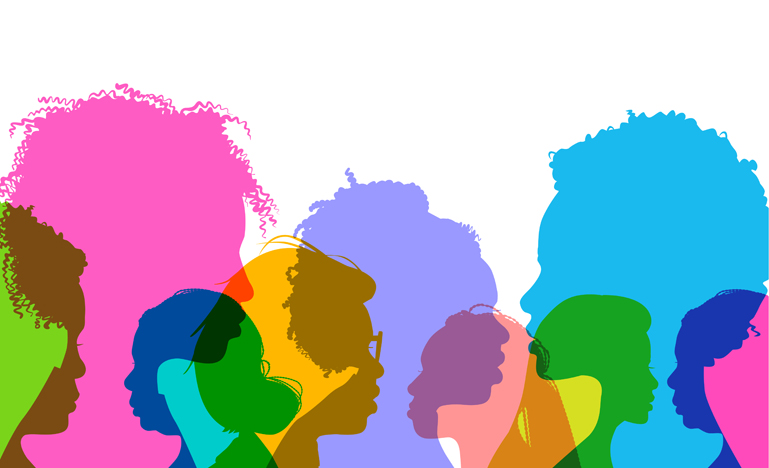Focus on improving our communities
Women’s empowerment events need to take a different approach.

The pancakes and waffles were the last straw.
News broke recently about a 2018 “Power-Presence-Purpose” event for women executives at Ernst & Young where, among other sexist lessons, attendees were told that women’s brains were like pancakes, but men’s were like waffles: “Women’s brains absorb information like pancakes soak up syrup so it’s hard for them to focus” while men’s “brains are more like waffles. They’re better able to focus because the information collects in each little waffle square.”
Around the same time as the “pancakes vs waffles” story, former US Homeland Security Secretary Kirstjen Nielsen spoke at Fortune Magazine’s Most Powerful Women Summit. Nielsen implemented and defended the Trump Administration’s family separation policy, which involved putting children in cages in detention centres along the border. As a protest sign outside the summit venue put it: “Powerful women don’t put kids in cages.” (I would have thought that was obvious.)
From stereotypes about breakfast foods for brains to the dangerous message that all power is good power, one thing is clear: there’s something rotten in the land of women’s empowerment events.
It’s enough to make you want to ban these events altogether. They’re certainly not working — at least not in the legal profession.
A recent study by the American Bar Association confirmed that women are still leaving law firms at disproportionate rates. At big law firms, women make up 45-50 per cent of the associates, but only 20 per cent of the partners. The study also found that: “Women report being four to eight times more likely to be overlooked for advancement, denied a salary increase or bonus, treated as a token representative for diversity, lacking access to business development opportunities, perceived as less committed to her career, and lacking access to sponsors.” The stats are likely similar in Canada, with even more disparities facing lawyers who are racialized, Indigenous, or from 2SLGBTQ+ communities.
Which is why it’s so frustrating to sit in conference rooms with other women lawyers talking about these same barriers, year after year. There’s certainly value in telling our individual stories (consciousness-raising is a feminist tool for a reason). But these one-off sessions can’t solve the systemic problems of our profession — a profession that often prioritizes the quantity of billable hours over the quality of legal work, and puts business needs ahead of professional obligations.
At the same time, while pay inequity and the ongoing exodus of women from private practice are real problems, they are problems of privilege.
I’ve come to believe that the best way to chip away at the systems that hold us back is to look outside of ourselves and into our communities. (Perhaps change outside the walls of legal organizations is what will drive change on the inside: stories about clients demanding more diversity on their legal teams are promising on this front.)
The recent CBA Leadership Conference for Professional Women was a proud exception to my rule against women’s empowerment events (I was on the organizing committee).
We chose the theme of “Building Thriving Communities.” Woven throughout the conference was the idea that we already have the skills to be leaders in our communities — and, given our position of privilege, we have the duty to use those skills for a higher purpose. This was a key message from our brilliant opening speaker Eleanor Beaton (a women’s leadership expert who makes me pump my fist, not roll my eyes.)
A joint session with the Canadian Association of Black Lawyers included a panel discussion about women of colour navigating corporate spaces and ended with an emotional conversation about allyship (and a standing ovation).
In another session, El Jones and Martha Paynter took the over-Instagrammed concept of self-care back to its political roots, framing their activism as the truest form of self-care (after all, what’s more nourishing than caring for each other?).
Nova Scotia Provincial Court Judge Laurel Halfpenny-MacQuarrie and Mi’kmaq lawyer Cheryl Simon gave a keynote address on Women Leaders in Indigenous Communities. Simon told a personal story about using her legal training to advocate for equality in her home community of Abegweit First Nation. Judge Halfpenny-MacQuarrie spoke about the development of the Healing to Wellness Court on Wagmatcook First Nation. This powerful session covered the legacy of colonialism (including the wrongful conviction of Donald Marshall, Jr.), the development of Indigenous law, and the meaning of reconciliation. Not the standard fare for a women’s conference, but vital knowledge for community-building.
These examples show that we can make our events more productive if we stop navel-gazing and start focusing on improving our communities. So maybe we don’t need to ban conferences about women and power; we just need to do them differently.
Sitting in a room complaining is not getting us anywhere. Let’s get out into the world and see what our power can do there.


